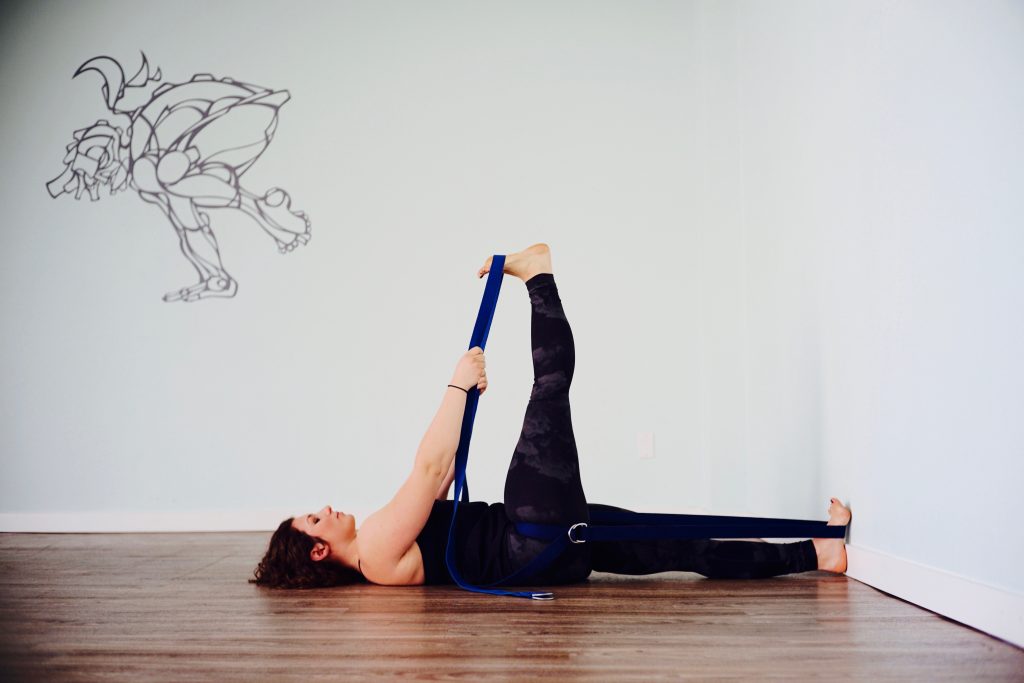I used to think that being flexible made me “good” at yoga. My flexibility is something that I was praised for by instructors and fellow students. I would be lying if I said it didn’t stroke my ego. As a newer practitioner, I believed that flexibility was the goal, and it was something that everyone was striving for in their practice. There is nothing wrong with being flexible, but I have realized that balancing flexibility with strength and stability is vital for a strong, sustainable, and healthy practice. If I had continued practicing the way I was, I would have gotten injured. My joints were absorbing all the weight from my postures rather than being supported by my muscles. This is why I am so thankful that I found Iyengar and Happy Back Yoga.

Over time, I’ve had the privilege of practicing with teachers who are aware of the subtleties of body mechanics. When I was encouraged to come out of poses and focus more on muscular engagement, I felt resistance and anger bubble to the surface. My flexibility was what made me “ME”! What would be left if I didn’t have that? Postures feel SO different to me now, and continue to evolve. They feel stronger, supported, safer, and smarter. It gives me confidence to know that I am capable of going somewhere new and evolving in my practice physically, psychologically and spiritually. Evolution and growth are things that we strive for when we come to our yoga mats. Evolution in my practice has meant being honest with myself about my strengths and weaknesses, facing those weaknesses with compassion, and lovingly working with them.
Sometimes we get so caught up in the shapes of poses that we compromise the entire pose in order to go deeper, get our hand on the ground, touch our toes, get our foot to our head, and so on, by whatever means possible! We are all exquisitely unique, of different sizes and proportions, requiring unique alignment in postures. Some of us may have more stable joints and muscles, others of us are more fluid and mobile. An arm or leg might be longer than the other. The curvature of our spines vary greatly from person to person. Happy Back Yoga helps us to adapt our practice in order to be balanced and supportive for our own particular configuration.
I was inspired to write this article after an experience I had while teaching. I noticed a student in Utthita Trikonasana (Extended Triangle pose) with her hand flat on the ground with her torso collapsed. I offered her a block for underneath her hand and she snapped at me “I don’t need that!” At first I was taken aback, but after some thought I could relate to the student. It wasn’t long ago that I thought getting my hand to the ground for Parsva Konasana (Side Angle pose) was the “goal.” My side body would be smooshed, compromising my breath and creating tension in my lower back. But never mind that, I got my hand on the floor, and that’s the point, right? And if someone were to come around and give me a block, in my head I’d probably be like “forget you, I don’t need that” (inhale love, exhale peace)! Unfortunately, props get kind of a bad rap in yoga. We get this idea in our heads that it’s somehow better if we’re able to do all poses without any “assistance” from props or other modifications. It’s as if using props to support your body and alignment makes you weak, or takes you away from the “true pose”. Props and modifications actually help to intelligently support the body so you can sustain a safe and fulfilling practice for the rest of your life! I have learned this gradually over time (and continue to learn). My yoga began with virtually no props, and now I use at least two blocks and a strap whenever I practice. Because I have a lot of flexibility, there are other aspects of my practice I can work with to make my physical and energetic practice well-rounded. Stability in poses is what will bring me the most balance.
It’s healthy and important to work towards physical goals in yoga, whether they be specific postures, to gain more strength and flexibility, or to be present in the stillness. I also believe that sometimes we get so caught up in how poses are supposed to look that we think we’re inferior because we can’t make our bodies look a certain way. There are some yoga poses that may not be safe or beneficial for our bodies based on our shape and proportions. This concept really hit home for me during my Happy Back training with Rachel Krentzman and Jaimie Perukunas.
So rather than just try to stretch my ligaments to conform to a shape, I now ask this of myself while I’m practicing, and for my students while I’m teaching: What is the intention of this pose?